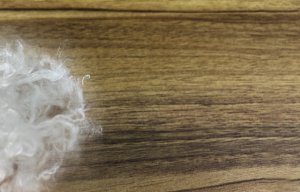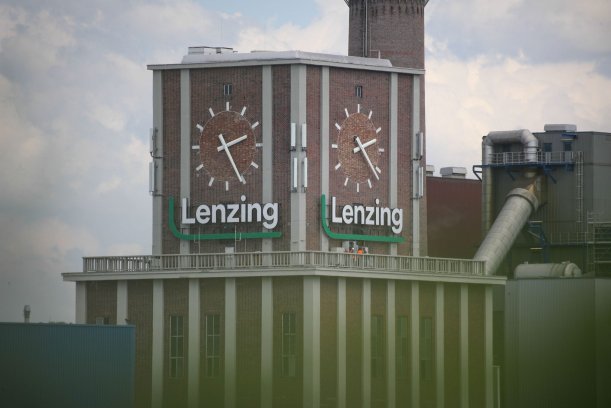
Lenzing completes €100 million upgrade in Indonesia
Around 500 jobs to go at the fibre producer’s operations in Austria by the end of 2027.

30th September 2025
Innovation in Textiles
|
Lenzing, Austria
Lenzing may sell its plant in Purwakarta, Indonesia, less than eighteen months after the Austrian-headquartered company announced a €100 million programme of upgrades at the site, including a transition to renewable electricity and a switch of production to its speciality viscose brand Veocel.
The plant, which has been a central element of Lenzing’s global production network, is now being included in a wider strategic review that reflects the need to navigate a volatile market environment with greater agility and focus.
The company, a leading producer of regenerated cellulosic fibres, is responding to ongoing geopolitical uncertainty and persistent weakness in both textile and nonwoven markets. Its revised priorities emphasise premium products, operational efficiency and the optimisation of its asset footprint, with the stated goal of becoming leaner, more agile and more resilient.
“For us, 2025 is the year of continued execution,” said CEO Rohit Aggarwal. “We have demonstrated that we can increase our profitability even in a challenging environment. It is important to further strengthen the agility, resilience and cost position of Lenzing with the aim of long-term value creation in order to reinforce the company’s position as global market leader in sustainable cellulosic fibres.”
Global backdrop
In the first half of 2025, Lenzing managed to increase both earnings and profitability, supported by strong cash flow generation. Nevertheless, the company expects the global backdrop to remain difficult. Trade conflicts, subdued consumer sentiment, rising costs and growing competition from Asia continue to shape conditions across the supply chain. Weak market recovery due to tariff uncertainties, low generic fibre prices in China and higher personnel, energy and raw material costs have all contributed to the pressure, leaving little room for manoeuvre in commodity segments.
Strategically, the company will concentrate on its premium branded fibres – Tencel, Veocel and Ecovero – which offer higher margins and are positioned to grow in high-value end markets. In parallel, Lenzing will gradually withdraw from lower-margin commodity segments, further underlining the rationale for reviewing the future of the Indonesian site. Growth will be pursued in both established textile applications such as denim, home textiles and menswear, and in fast-expanding nonwoven segments including hygiene, packaging, filtration, medical and industrial products. Production capacities will be selectively shifted from textiles to nonwovens to capture the growing demand for renewable raw materials in that field.
Lenzing is also seeking to intensify application-driven innovation through closer partnerships with customers, supported by its network of application innovation centres. This targeted use of resources is intended to expand technological leadership and strengthen regional sales organisations, ensuring the company remains close to key markets in Asia and North America.
Job cuts
Cost efficiency remains a critical pillar of the strategy. A series of measures will reduce overhead and streamline operations, including a headcount reduction of around 300 positions at the Lenzing headquarters by the end of 2025, followed by a further 300 by 2027. These job cuts, which will be implemented under a new social plan agreed with employee representatives, are expected to generate annual savings of more than €45 million by the end of 2027. In total, approximately 600 jobs will be shed in Austria, reflecting what COO Georg Kasperkovitz described as “tough but unavoidable implications” of the strategic shift.
Alongside labour reductions, the company will pursue systematic energy optimisation across all sites, targeting a reduction in consumption of more than five per cent, and continue its programme to boost both labour and asset productivity.
Despite the closures and cost-cutting measures, Lenzing remains committed to its industrial base in Austria. More than €100 million of strategic investment is planned for its sites at Lenzing and Heiligenkreuz by the end of 2027. Heiligenkreuz will reinforce its position as the most environmentally friendly production facility for speciality fibres worldwide and a hub for innovation, while further projects are being prepared at Lenzing in collaboration with strategic partners.
Capturing growth
The global demand picture, meanwhile, offers some hope. The market for regenerated cellulosic fibres is forecast to grow at between five and six percent annually over the next five years, driven by population growth, rising purchasing power, constraints on cotton supply and a willingness to pay for sustainability. Lenzing intends to focus on capturing this growth in the more profitable lyocell and modal segments, reducing its exposure to the mature viscose commodity market and strengthening its pulp business in the process.
For 2025, Lenzing’s management has confirmed an EBITDA outlook above the previous year’s result and is targeting around €550 million in EBITDA by 2027, assuming stable geopolitical and market conditions. Yet the planned impairment losses of up to €100 million related to the Indonesian site underline the scale of the transformation underway.
In an industry under mounting pressure from both economic and environmental forces, Lenzing’s latest moves mark a decisive step toward reshaping its operations for a more selective and value-driven future. The coming years will test whether this will be enough to secure its leadership in the fast-evolving market for sustainable fibres.

Business intelligence for the fibre, textiles and apparel industries: technologies, innovations, markets, investments, trade policy, sourcing, strategy...
Find out more